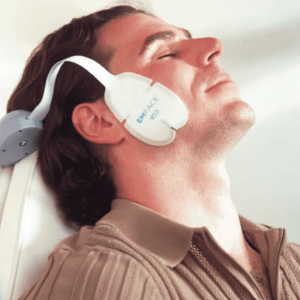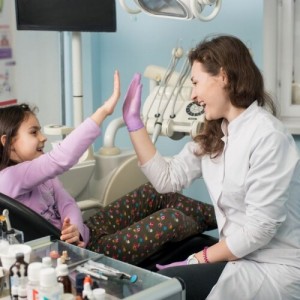
Clinical prevention approaches in the management of implant patients
Gianna Maria Nardi
The failure of implant therapy is characterized by the presence of visual signs of inflammation and bleeding on probing, mucositis (PIM) and in cases of peri-implantitis (PI), loss of supporting bone, caused by ineffective maintenance management.
Among the risk indicators for the health of the tissues of the patient wearing an implant prosthesis, the control of bacterial biofilm is certainly a priority, and therefore the effective management of the assisted person's home hygiene lifestyle and follow-ups for therapy sessions non-surgical periodontal treatment, important aspects for the success of implant therapy must be considered.
The advantages of a digital platform for one-to-one communication must be taken into consideration, allowing a new language of care through technology, and effective, shared and controlled personalization of follow-ups.
The prosthetic superstructure of the implant often prevents effective home hygiene around the implant neck and conventional mechanical therapies adopted in the treatment of periodontal disease have their limitations so obtaining good access to the affected area can be difficult, which is why technology offers problem solving by facilitating the operator and assisted person. The choice of the same and of innovative clinical approaches must consider the importance of the scientific support that ensures the quality of the result of the therapy.
PIID in oral surgery can develop in the early postoperative period due to impaired wound healing (early infection) or after the implant integration process (late infection) a significant cause of more frequent dental implant failure. The innovative clinical approaches of ozone therapy and photodynamics must be perceived as a considerable support for the success of implant maintenance.
For home oral hygiene therapy, photodynamic therapy allows you to have control over bacterial activity and/or inflammation with easy applications.
Before application, the patient must dissolve one Lumorinse tablet and rinse for 60 seconds.
Subsequently you can insert the Lumoral and activate the photo-activation. Individual risk factors must be considered for the frequency of home use, which in case of use on a patient for preventive purposes, will be used by the patient 2 times a week for 10 minutes, in case of mucositis 1 time a day for 10 minutes, and in case of peri-implantitis 2 times a day for 4 weeks with 30 minute photo-activation.
Finnish researchers from the University of Helsinki, Department of Oral and Maxillofacial Pathology, and the Department of Dental Medicine of the Karolinska Institutet, have demonstrated how home photodynamics can improve the state of health of the tissues adjacent to the implant.
Ozone therapy with ozonated olive oil is another clinical approach that offers the possibility of more effective management of eubiosis conditions in the oral cavity of assisted people who have undergone implant therapy.
Precisely due to the difficulties of access that often make it difficult to control bacterial biofim, the use of mouthwash becomes essential, and among the new protocol scenarios, the use of ozonated olive oil mouthwash, thanks to its antiseptic, anti-inflammatory capacity anti-edema, anesthetic and healing, and a home instrument which is also not aggressive, respects the microbiological balance of the oral cavity, is not alcoholic and does not create discolouration on the dental and prosthetic-implant surfaces.
In case of treatment for peri-implantitis, it will be possible, after non-surgical periodontal therapy, to insert the extra-ozonated olive oil Perioral3 (Gemavip) into the peri-implant pocket, and for home hygiene, use the Ialozon home gel on the inflamed implant site , which can be used with toothbrush and pipe cleaner.
The difficult management of oral health is entrusted to the expertise of the dental hygienist, who must be open to new clinical approaches with the aim of better results in maintenance therapy.
 Related articles
Related articles
Oral surgery 14 February 2021
Authors:Magda Mensi, Elisabetta Audino, Eleonora Scotti, Emanuele Zanola, Elisa Bettinsoli, Stefano Negrini, Luca Visconti, Stefano Alessandro Salgarello
INTRODUCTIONThe aim of this retrospective observational study is the comparison between two different surgical approaches for the ONJ treatment in terms of healing and absence of recurrences. These...
Products 23 October 2025
Bringing Innovation to TMJ Management With EMFACE Technology
Jonathan B. Levine, DMD, a New York City prosthodontist, explains how EMFACE is helping treat TMJ, and why his practices regularly use the technology for cases involving muscle spasm, hyperactivity,...
Oral Hygiene & Prevention 03 October 2025
Dental treatment planning and management for the mouth cancer patient
The need to deliver cancer treatment promptly often requires modification of ideal dental treatment plans.
Pediatric dentistry 24 September 2025
The objective of this study was to survey members of the American Academy of Pediatric Dentistry (AAPD) regarding their use of behavior management techniques.
Products 23 September 2025
Dentech’s Practice Management Software Has Robust Feature Set
Dentech’s state-of-the-art practice management software fits right into the day-to-day operations of a dental practice of any size.
 Read more
Read more
Much like EMTs rushing to the scene after an accident, stem cells hurry to the site of a skull fracture to start mending the damage. A new finding has uncovered the signaling mechanism that triggers...
Products 05 November 2025
SimplyTest has launched a groundbreaking saliva-based test to detect high-risk strains of oral human papillomavirus (HPV), a major cause of oropharyngeal cancers.
News 05 November 2025
Perimetrics, Inc., a dental technology company pioneering quantitative diagnostics, announced today that the U.S. Food and Drug Administration (FDA) has granted clearance for the InnerView...
News 05 November 2025
On October 15, open enrollment for Medicare began nationwide. Hundreds of thousands of seniors in New Jersey will once again face the challenge of finding the right Medicare coverage, including the...
Digital Dentistry 04 November 2025
Digitalisation is an expanding field in dentistry and implementation of digital teaching methods in dental education is an essential part of modern education.















